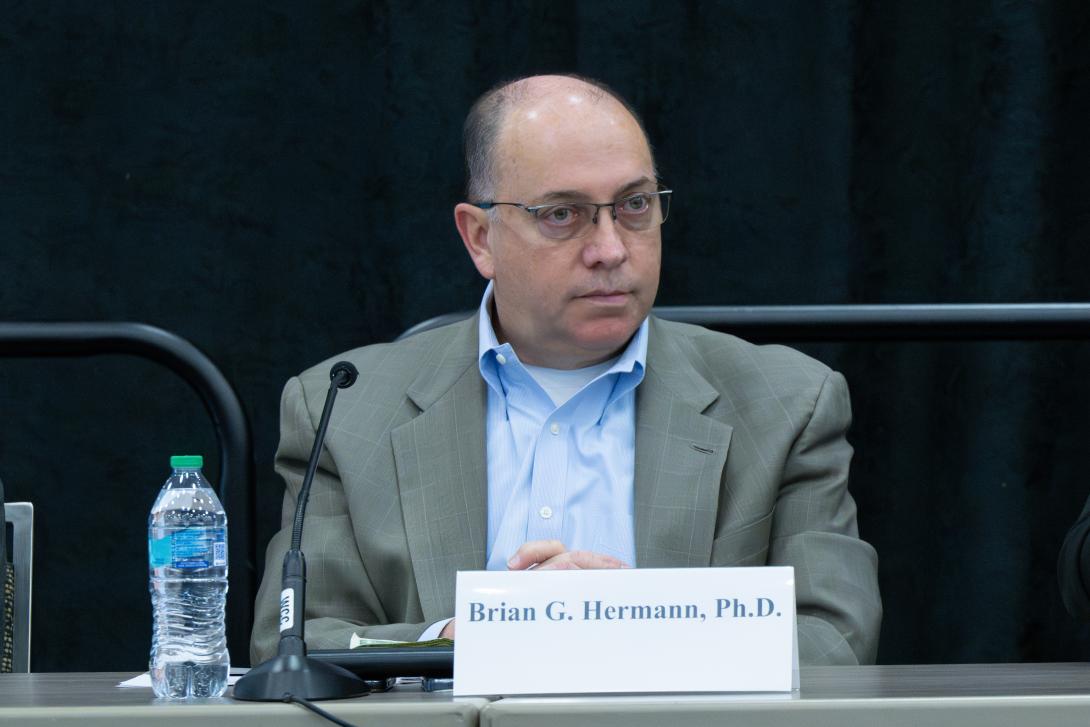DISA to Industry: Tell Us What Problem Your Solution Solves
Events like TechNet Cyber, an annual event focused on cybersecurity in defense, offer an opportunity of "speed dating" for government and industry. Fostering relationships is crucial for continuous modernization, officials from the Defense Information Systems Agency (DISA) agreed during a panel discussion in Baltimore.
For DISA Program Executive Office Cyber Director and Program Executive Officer (PEO) Brian Hermann, such relationships are most important for shedding technology debt.
Joining Hermann on stage were Jason Martin, component acquisition executive and director of the acquisition organization, DISA; Martha Jasper, business systems portfolio manager, services directorate, DISA; Christopher Paczkowski, director, PEO Transport Directorate, DISA; and Col. Jeffrey Strauss, USA, military deputy, programs, DISA.
“What I need to understand is whether or not where we are headed aligns with where your technology roadmap is taking us, because that’s the surest way to avoid the tech debt problem is to have evolution of the capabilities that you put in place while they’re in place so they don’t become irrelevant and have to be ripped out,” Hermann told an audience of industry members.
Hermann also spoke on the need to be creative due to historically working within the sustainment budget.
“Having the money to operate the capabilities that you have today that have become almost impossible to shut off because somebody’s still leveraging those capabilities, or you don’t have a clear path to a newer, better way to do that,” Hermann continued.
This is where DISA needs industry’s help, he stressed, speaking on the importance of understanding what the transition path looks like. With that, Hermann spoke on the ongoing Thunderdome project, an initiative for the U.S. Department of Defense (DOD) to achieve zero-trust compliance.
“Initially when we talked to industry about zero trust, as we got ready to start off the Thunderdome project, the best practice answer that we got from industry was, ‘Well, the easiest thing is to do greenfield, start your whole network all over,’” he recalled.
Such an approach does not work for the DOD, Hermann stated. His team therefore had to find a way to modernize in place. A modular approach is what’s needed to help the department succeed, he explained.
Hermann also spoke on the success of the full content inspection cyber defensive capability, an as-a-service protection the agency put in place at internet access points to replace a government off-the-shelf product developed by another DOD agency.
“We realized that if there is an existing service that we could leverage, instead of having a PMO [project management office] dedicated to sustaining and evolving a capability, that was a win for us,” Hermann said. “We had to establish what that would take to do operationally, so it wasn’t just an acquisition challenge, it wasn’t just a financial challenge, we had to change the way we operated our cyber defenses at the perimeter so that we could take advantage of better, new technology and the evolution that we see on the horizon for that.”
At the end of the panel discussion, during the Q&A session, DISA’s Jeff Marshall walked up to the mic to offer his suggestions for industry partners.
“When you want to come talk to us, my ask is talk to us about what the strategy is that your product or your solution or your service does,” he said. Marshall currently serves as director of J9 Hosting and Compute.
“Tell us what problem your solution solves,” he stated, emphasizing the need for those solutions to meet his—and DISA’s—business requirements to fill current gaps. “That’s my ask,” he concluded.
TechNet Cyber is organized by AFCEA International. SIGNAL Media is the official media of AFCEA International.






Comments